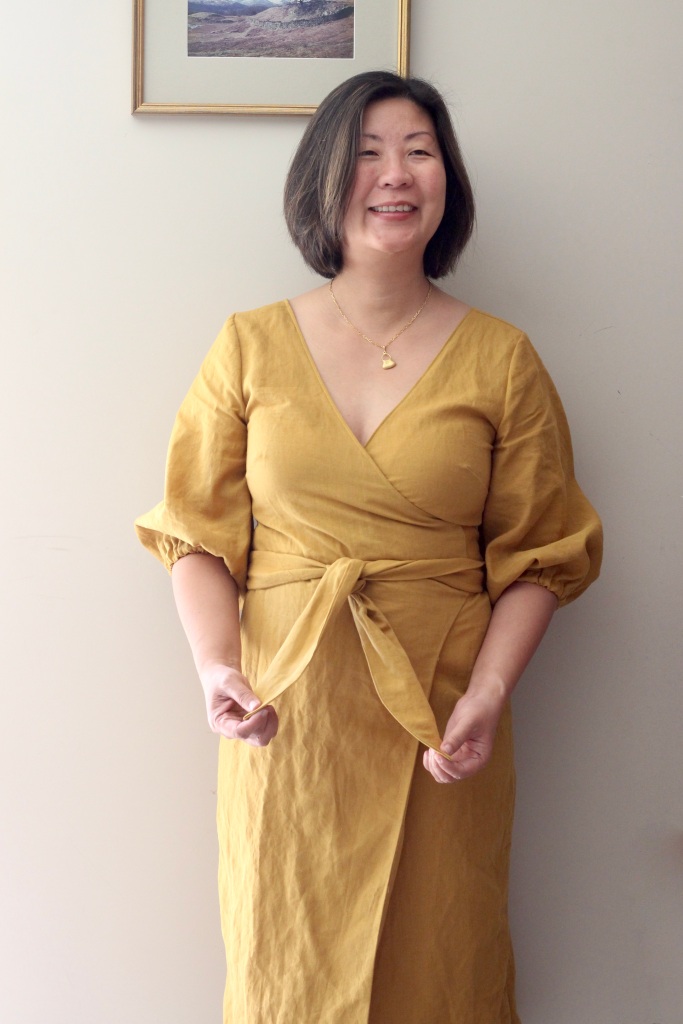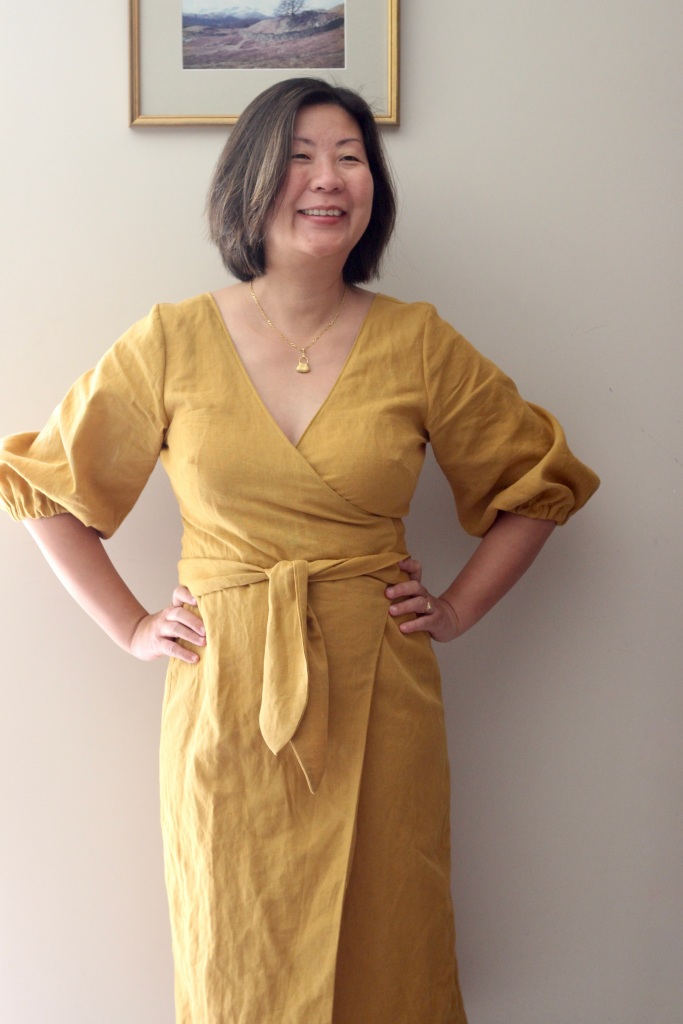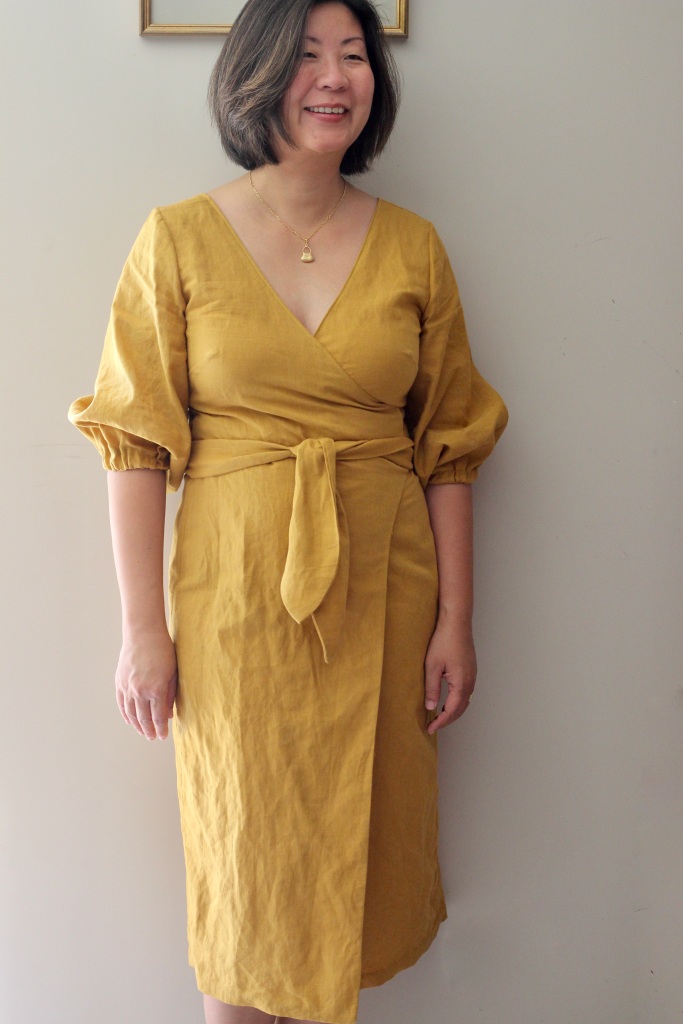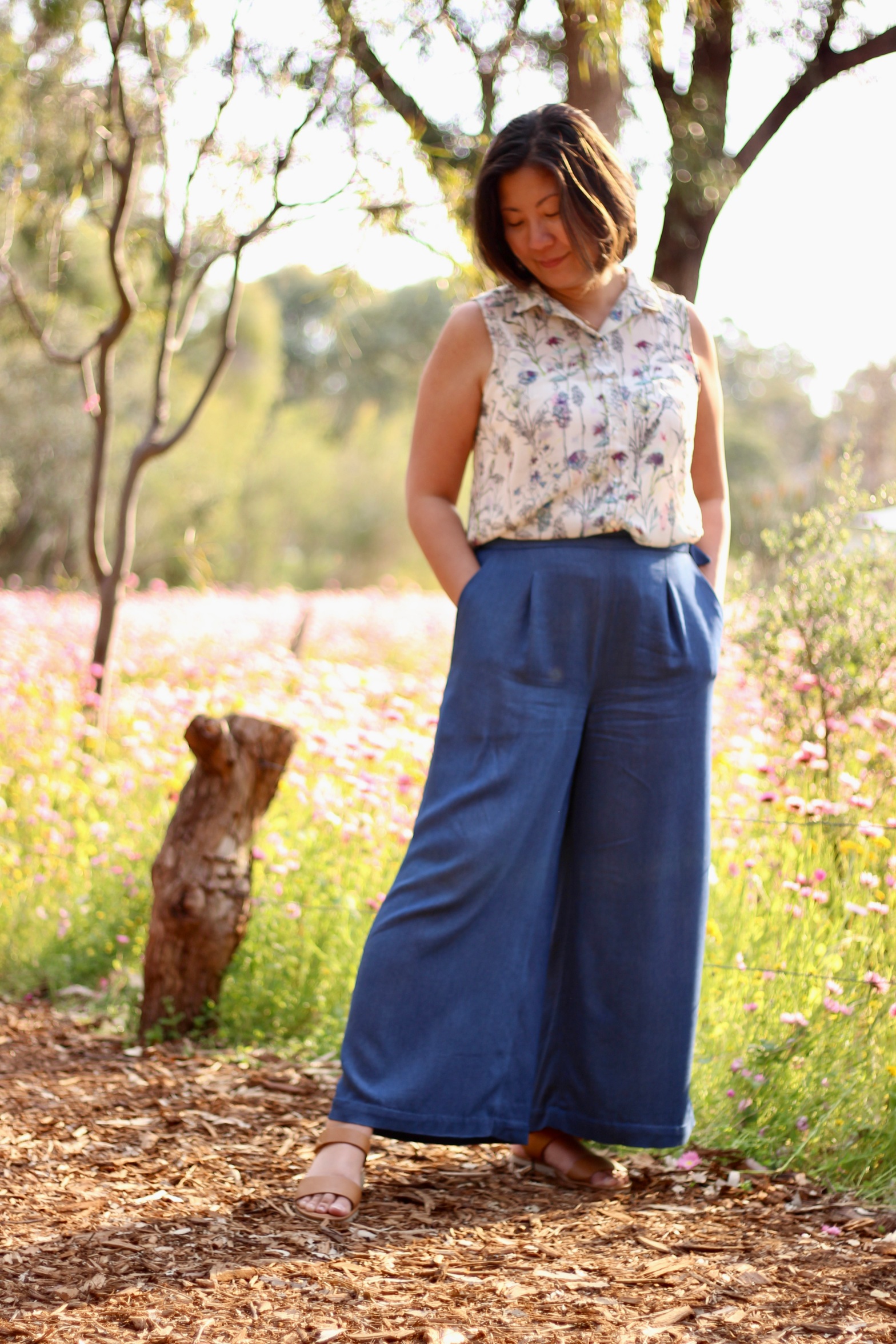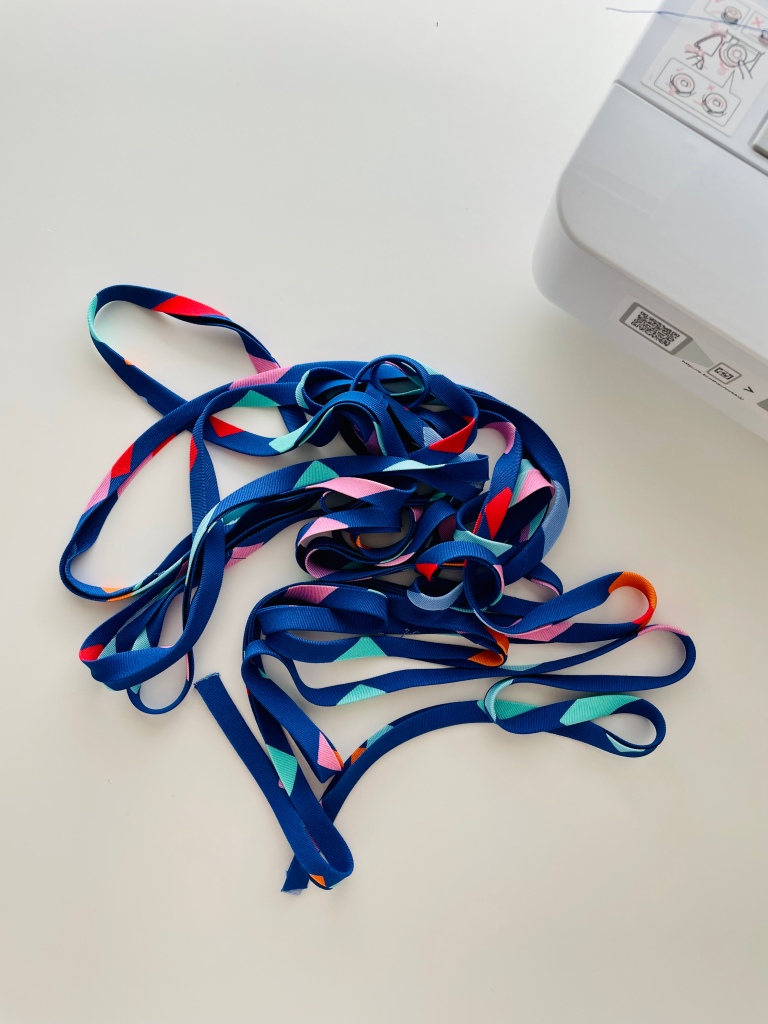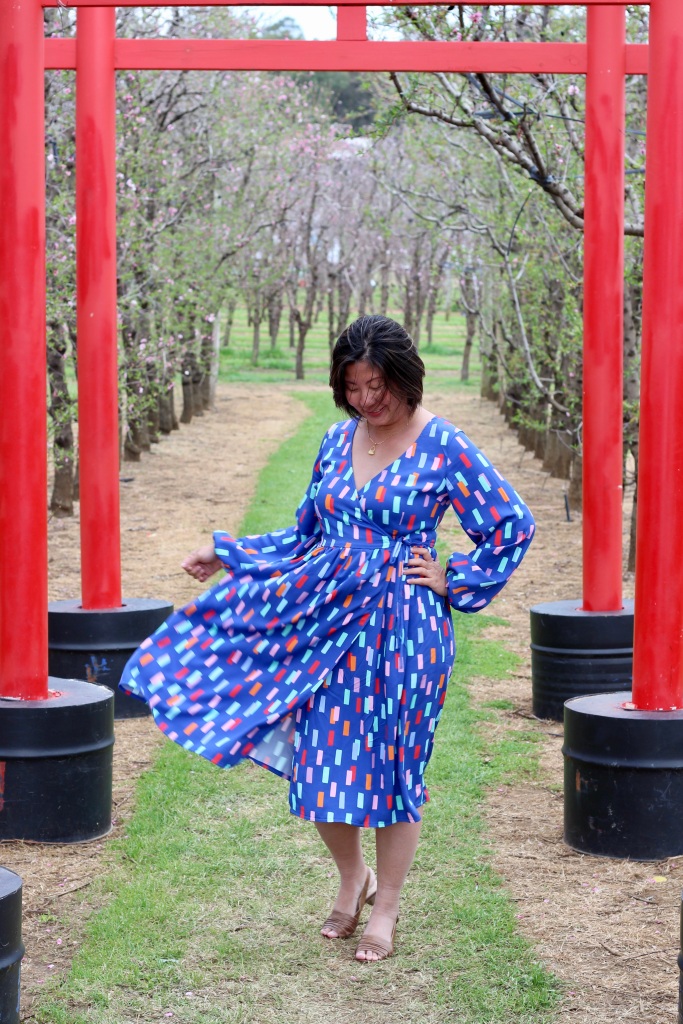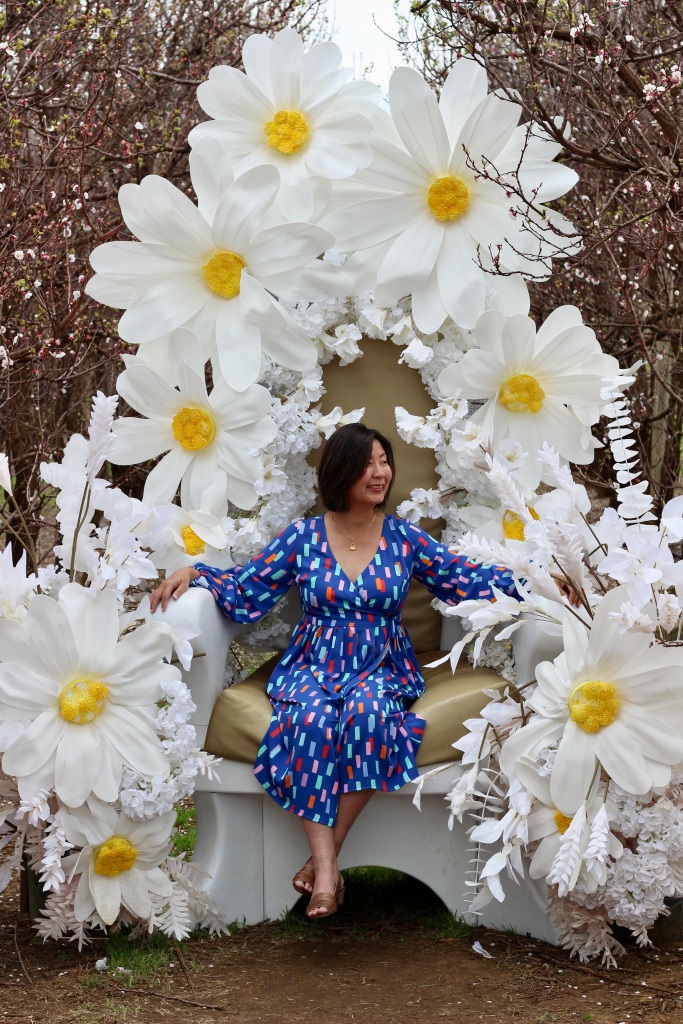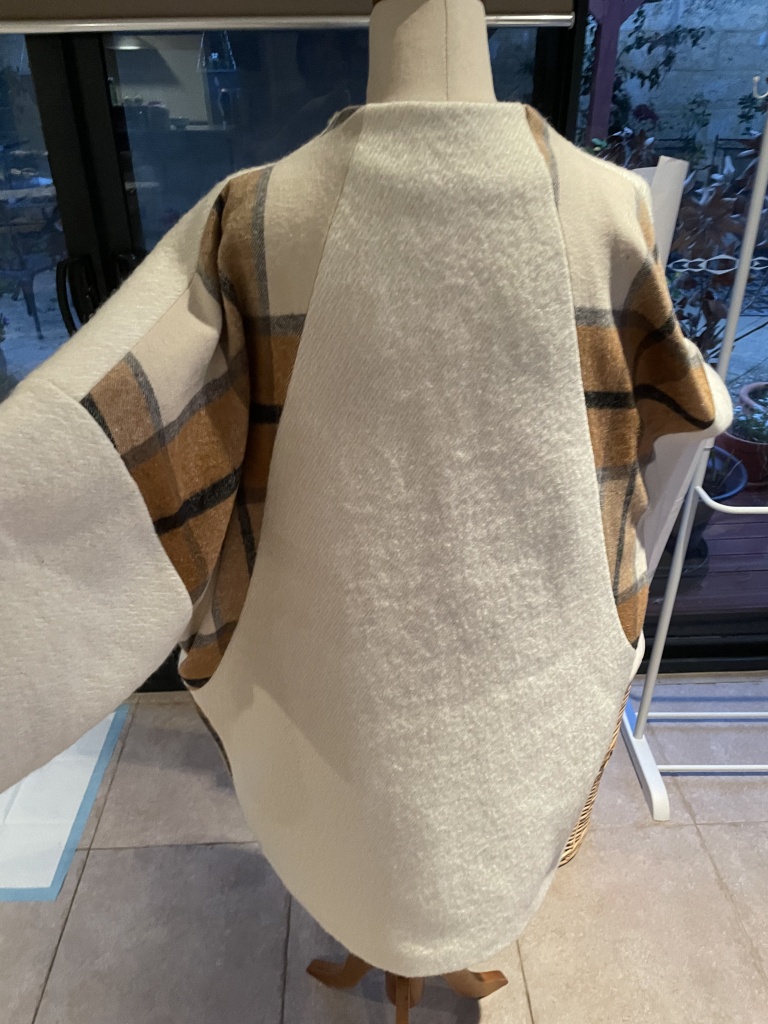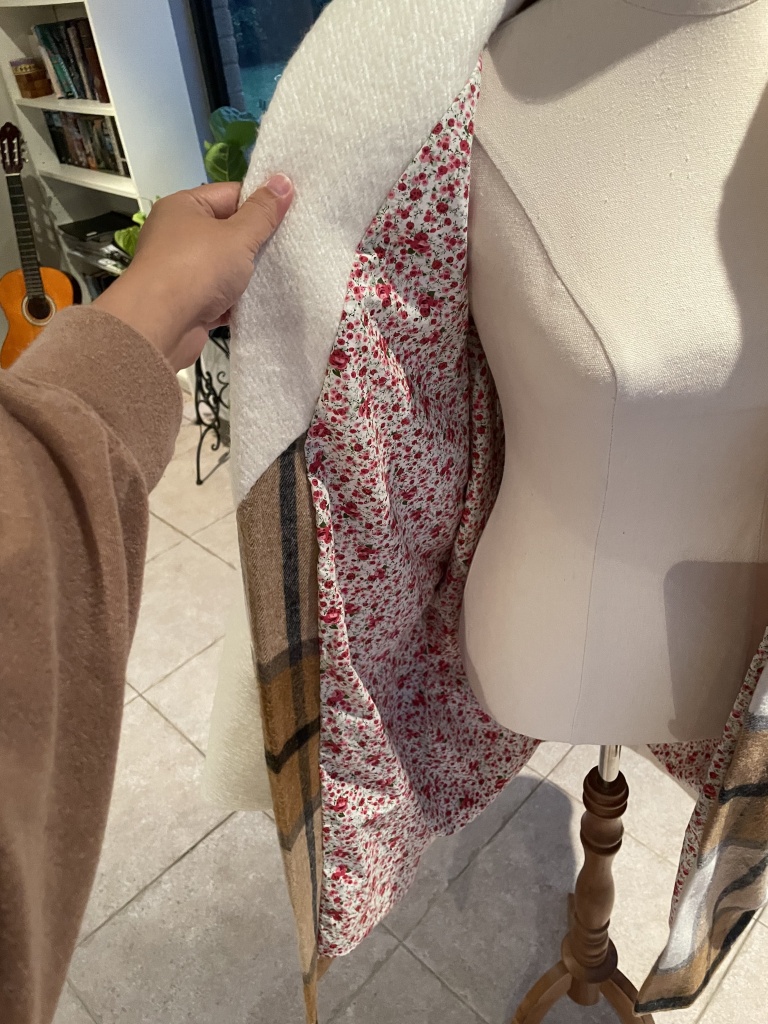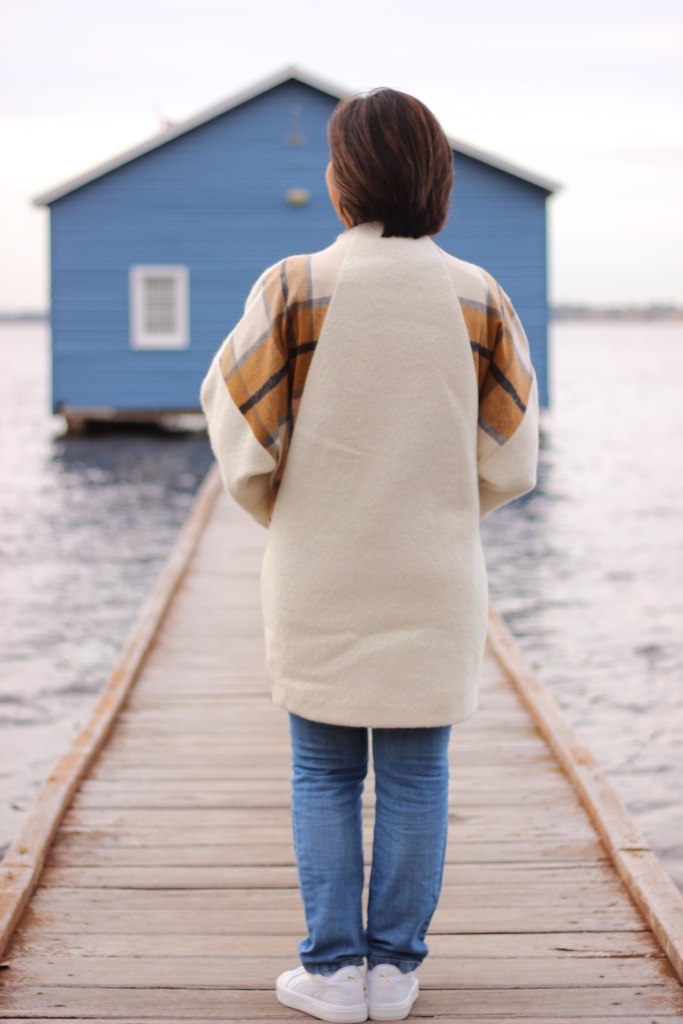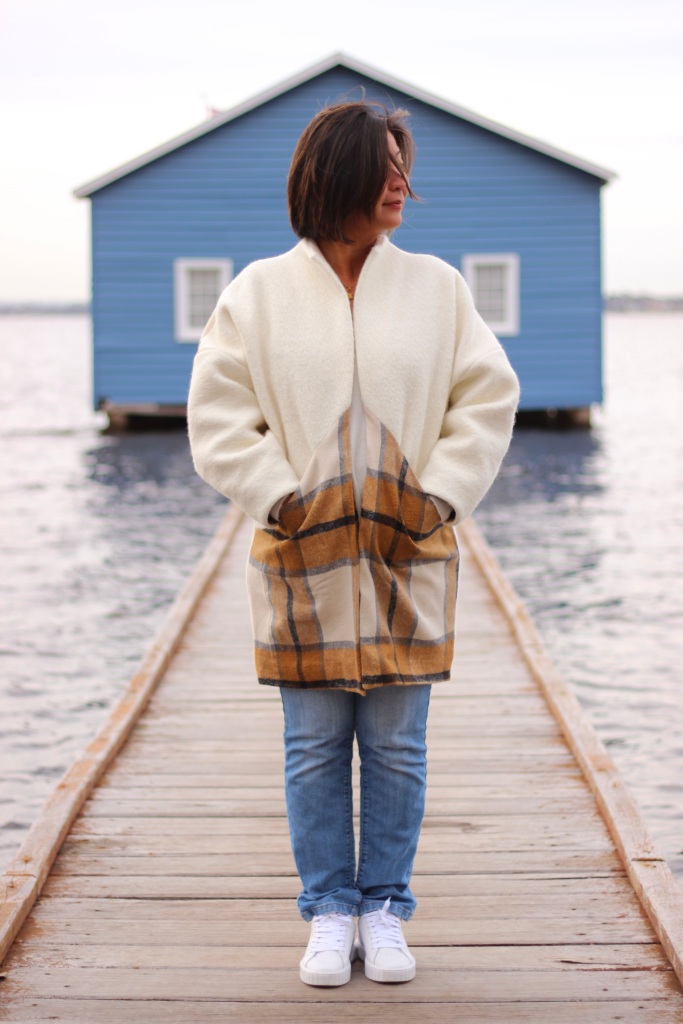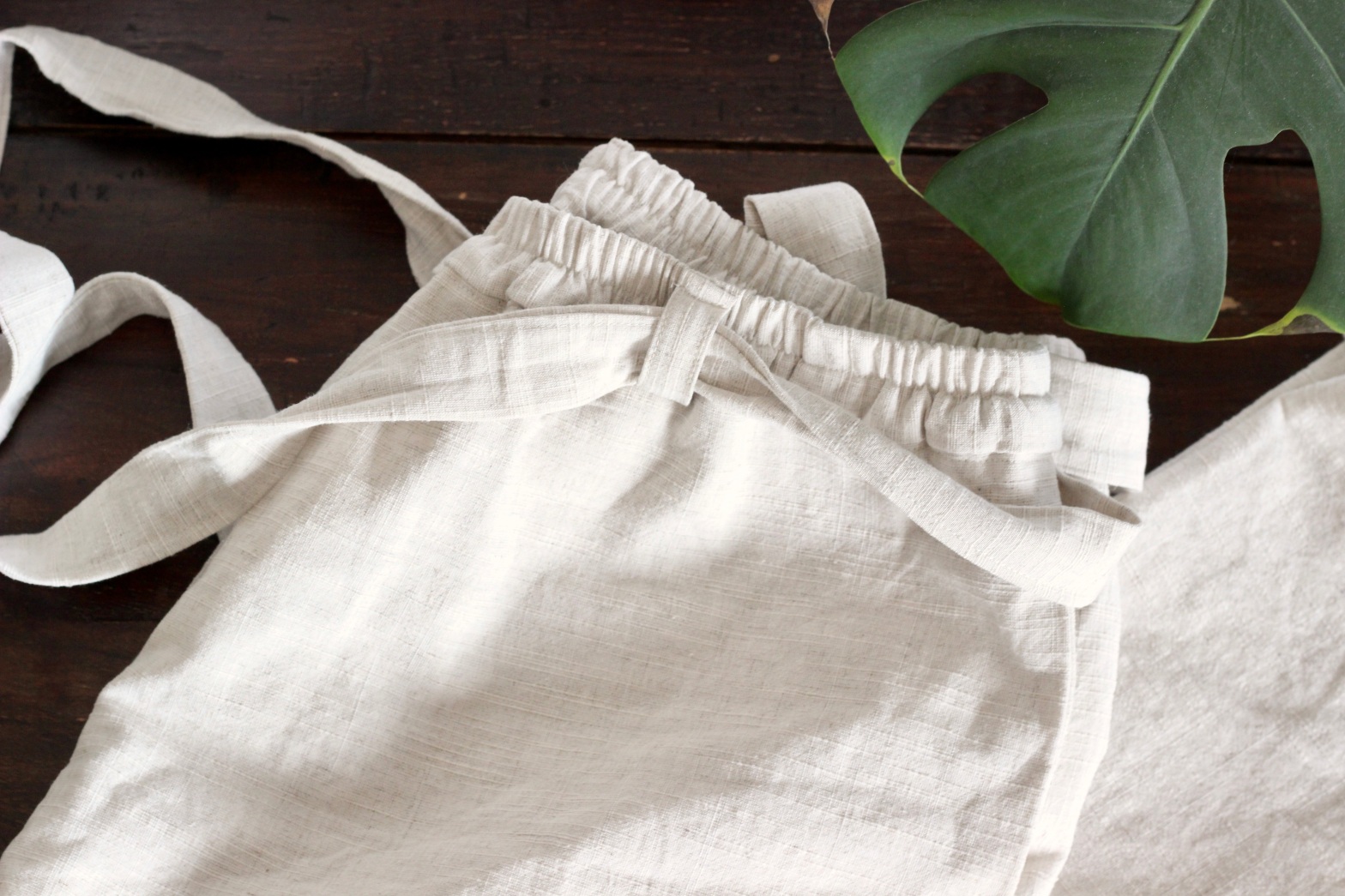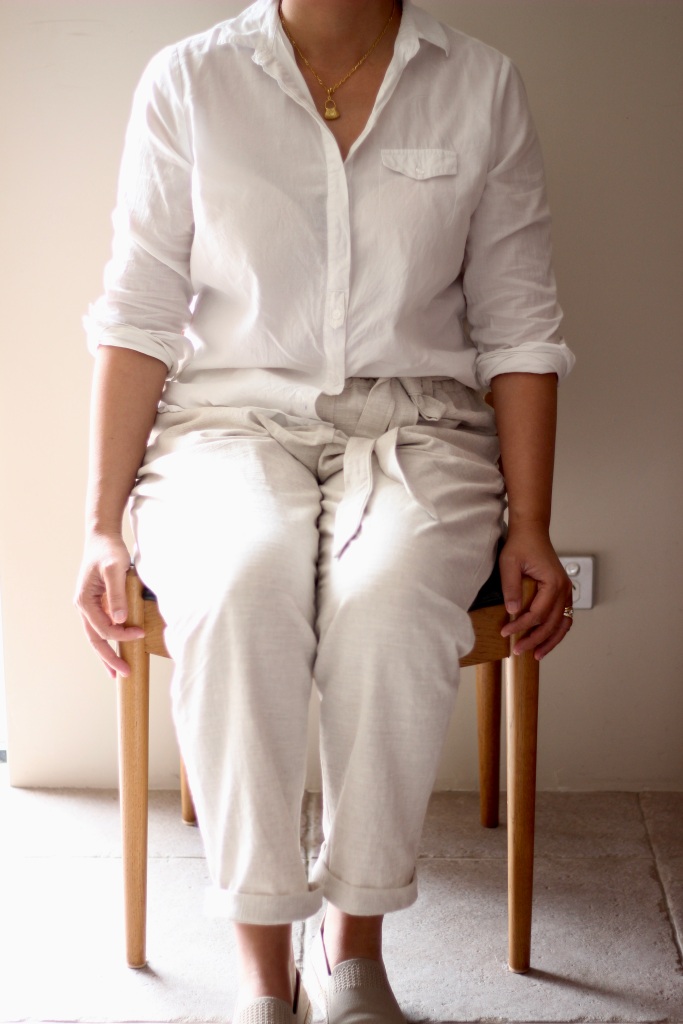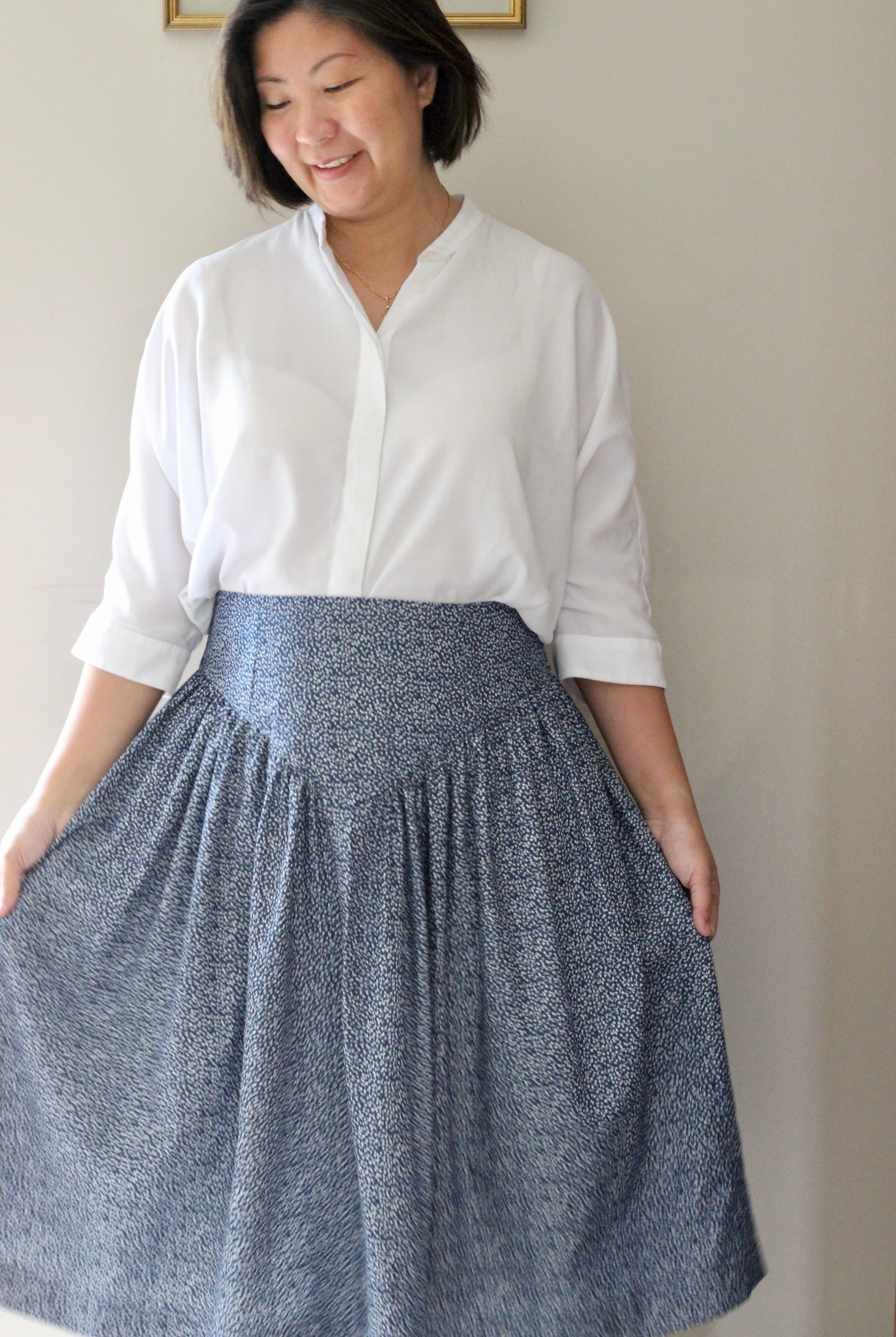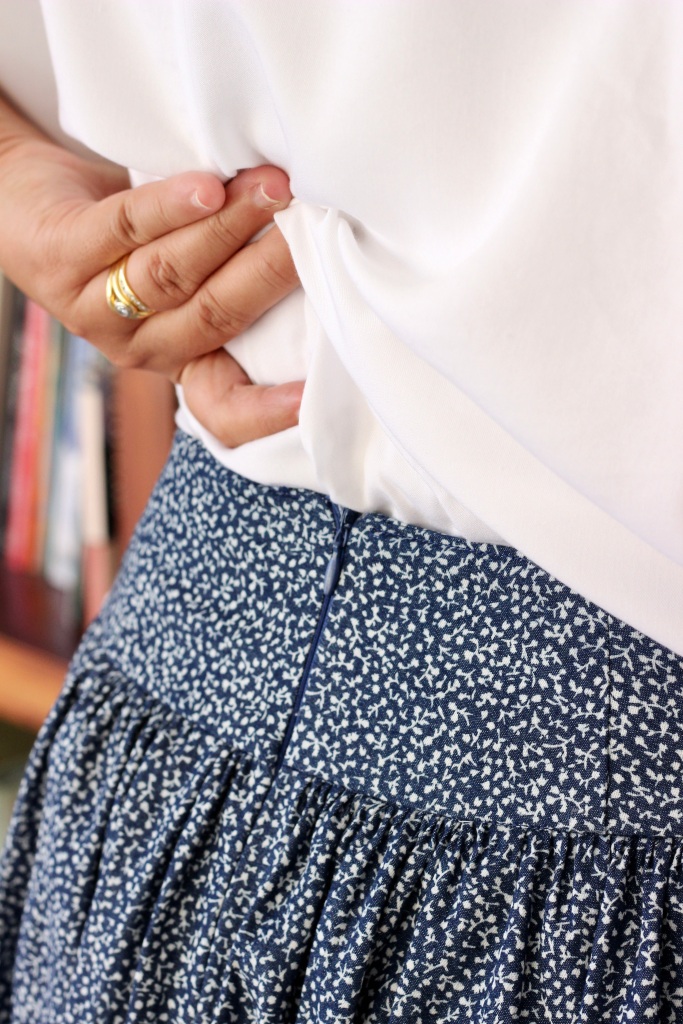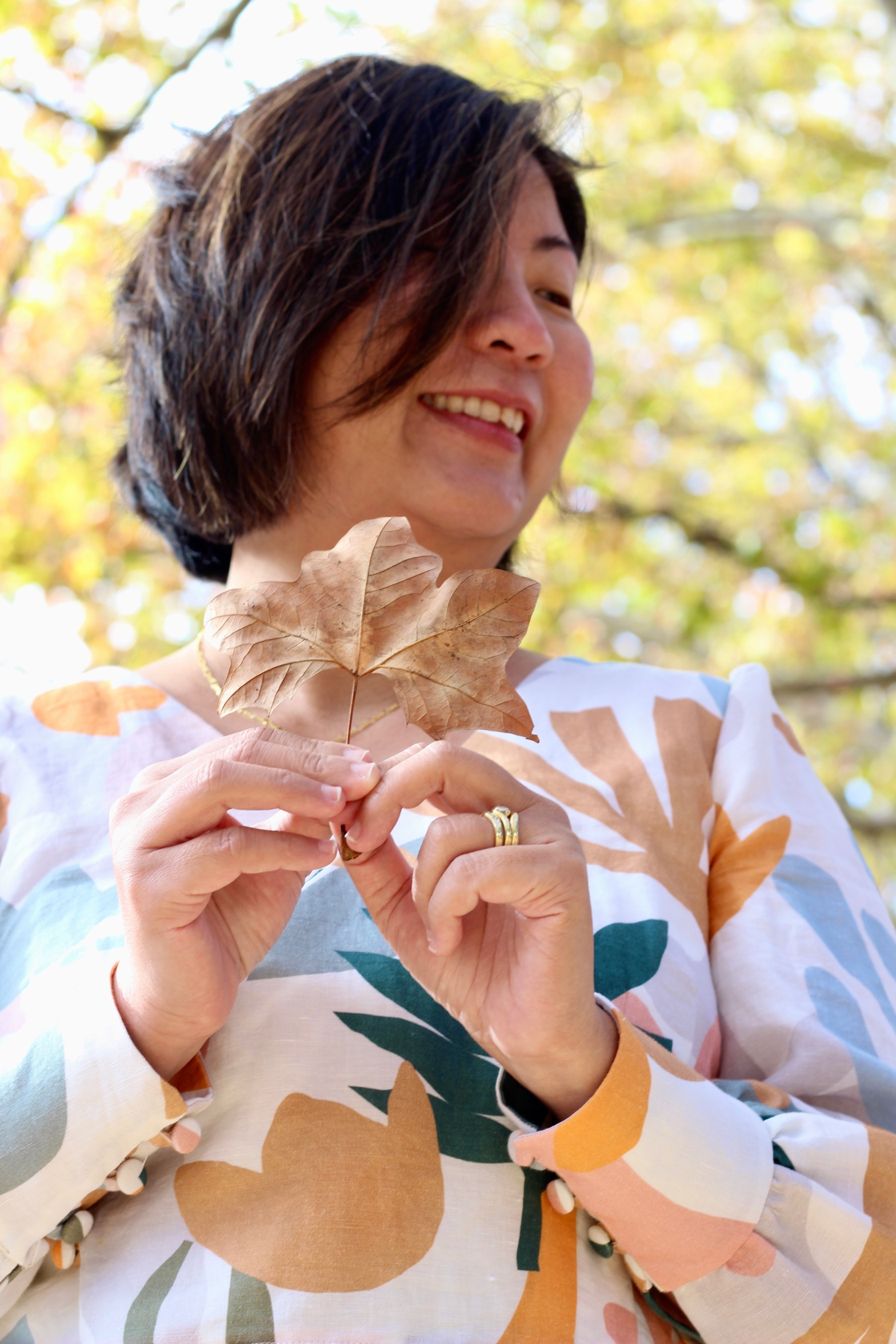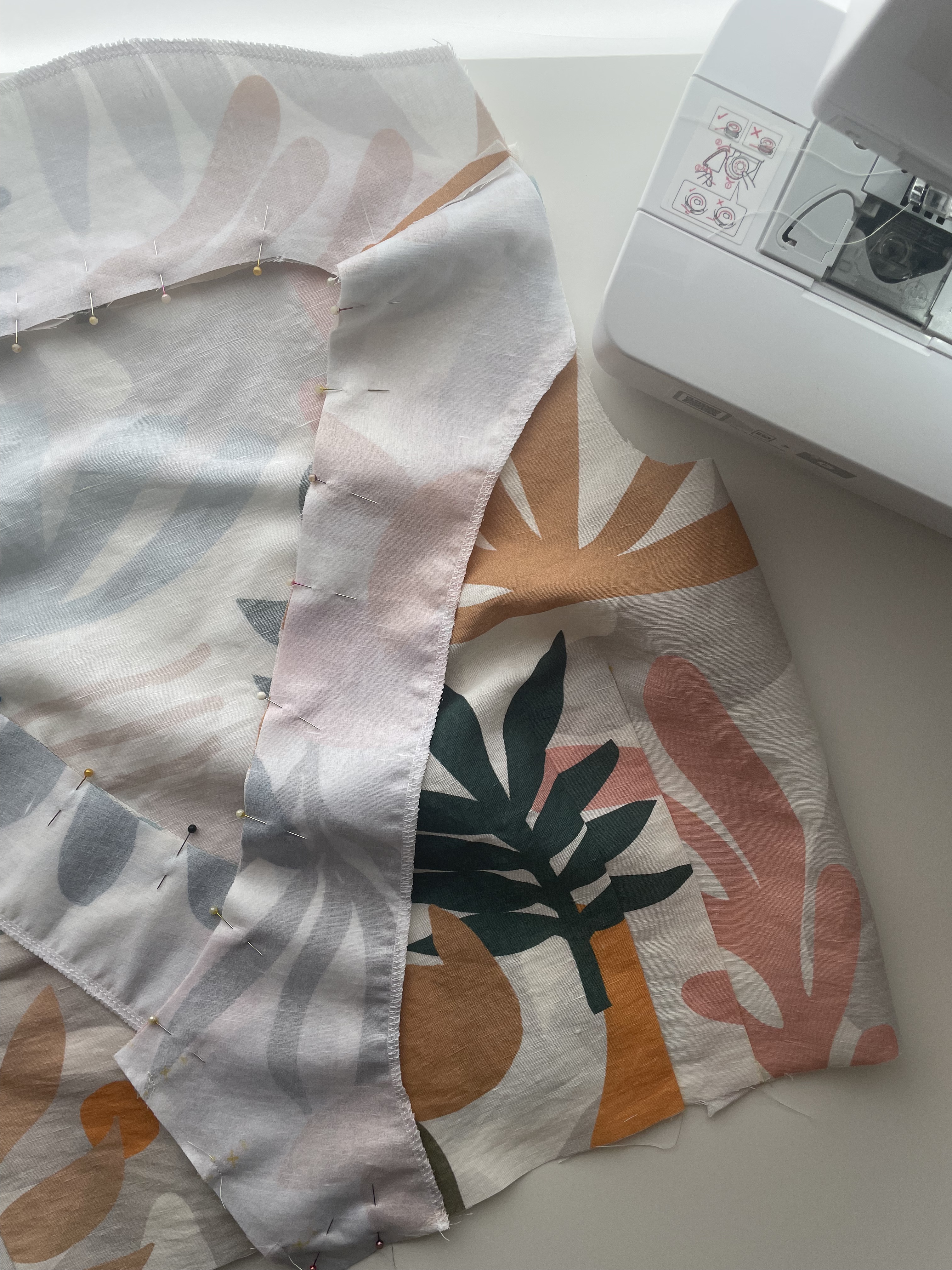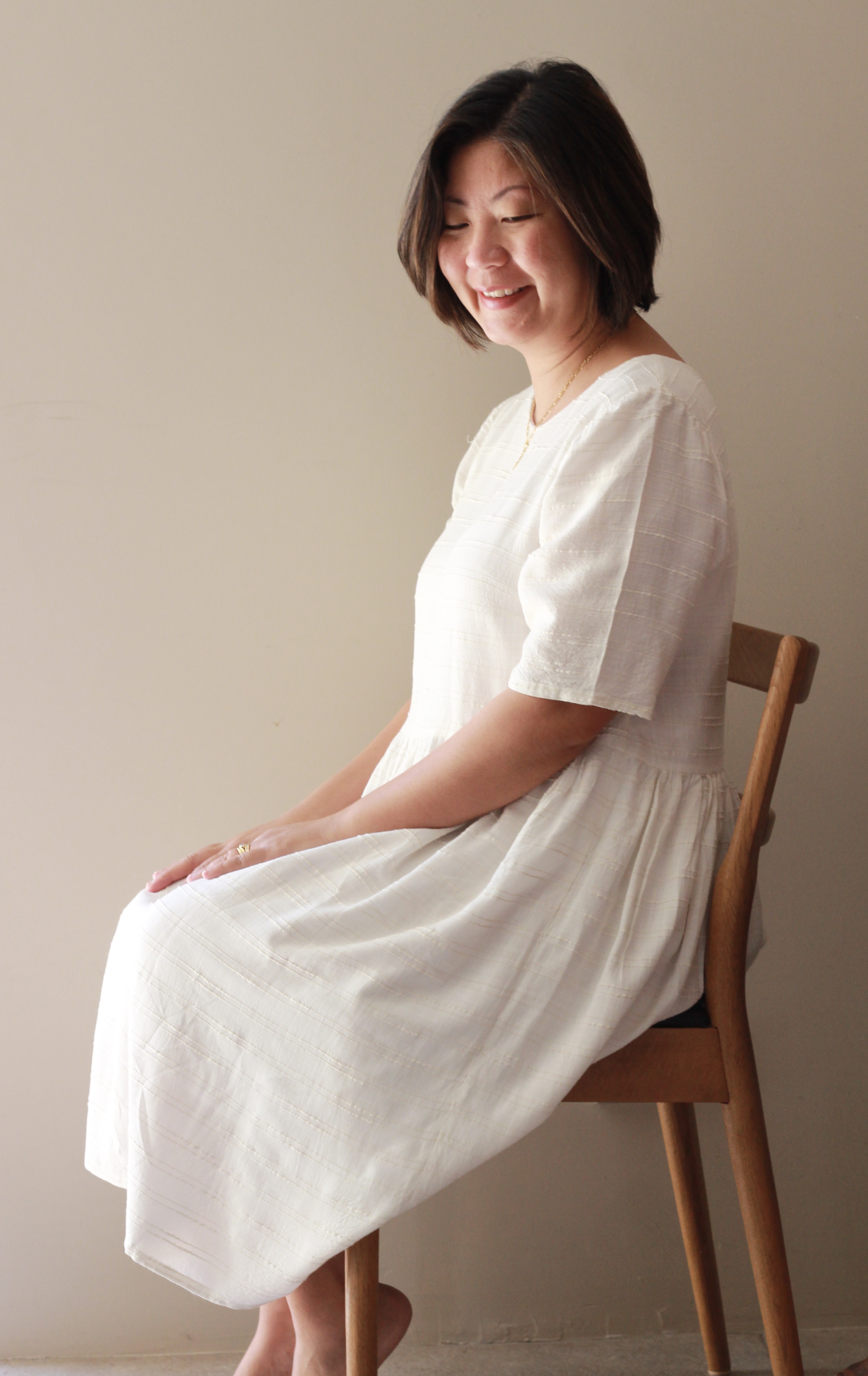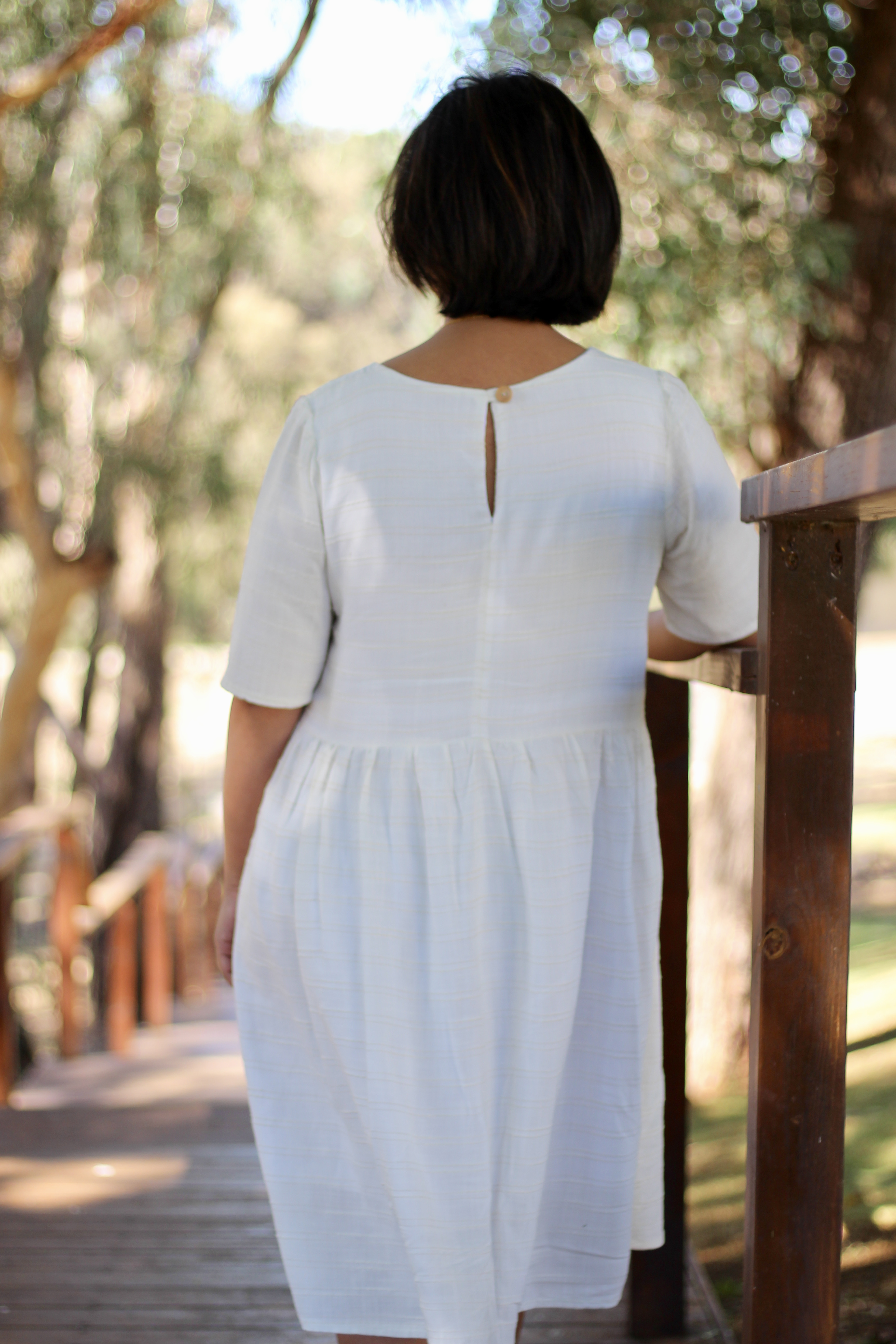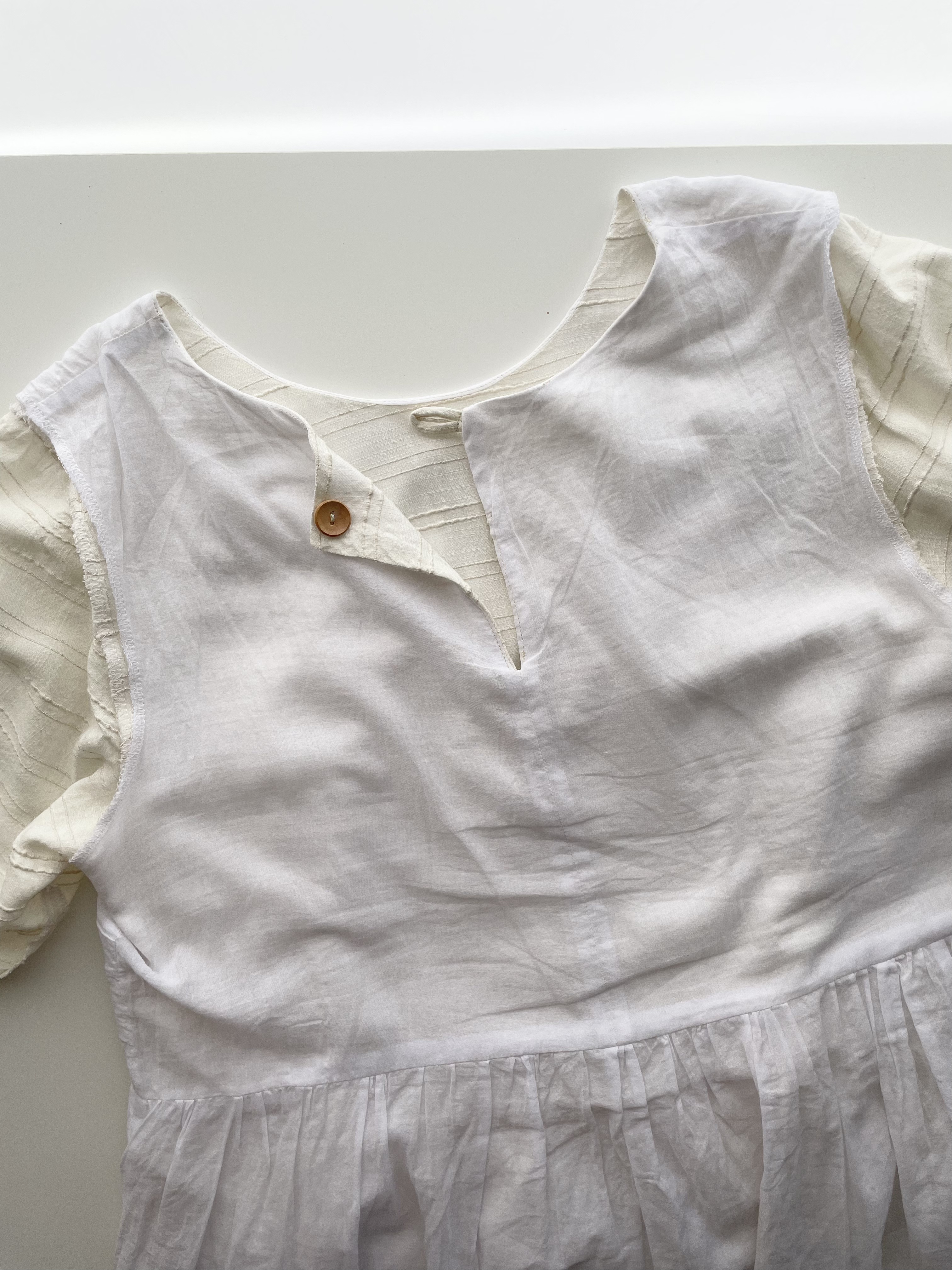Making a toile
This is my first attempt at a Deer and Doe Pattern. The Orchidee pattern can be sewn as a dress or a blouse. I’ve chosen to start with the blouse. It has beautiful puffy sleeves with a short peplum cinched in at the waist and the most intriguing component for me, the button loops or sometimes referred to as bridal loops as they are commonly seen on bridal gowns. It’s also fully lined which adds to the quality of the make.
When I started sewing, I would often read the warning in a pattern to toile, or I’ve also heard it being referred to as a muslin. Basically, it’s always a good idea to sew the pattern or part of it with cheaper, or in my case, remnant fabric. It was a struggle at first to understand how to make an effective toile, so I thought I’d document my process in this blog post. There are some good articles of how to fit things properly, but this is my personal process. When I was learning, I found it hard to follow more professional tutorials so I hope this more basic process will be helpful to someone just starting out.
Talking about fit, that’s where I started. Looking at the sizing chart, I sat between size 42 with a 37-inch bust and size 46 with a 33-inch waist. It was also important to check the finished garment measurements as this informed me that there isn’t much ease in the fit meaning that it should sit quite snug or fitted to the body. From here, I printed the size 42, 44 and 46 so that I could grade between the sizes. I would start with the size 42 bust and grade to the size 46 waist.

Now, I know that some people like to print every size out and then trace but I really love the option of just printing my sizes and then modifying the pattern and cutting into the paper. I usually buy my patterns as a PDF version for this very reason because even if I cut into the pattern and my size changes next time, I can still print and repeat the process.
So, before cutting into the fabric, I usually try to figure out what I’m most unsure about with the fit of the garment I’m making. In the case of the Orchidee blouse, I needed to know from my toile, whether the waist would fit, where the neckline ended and where the under bust seam sat. This then really clarified the process for me as I don’t tend to follow the instructions in order. I used to just use cheaper fabric and sew up exactly as instructed by the pattern but in my opinion, that wastes time, effort, and material as even cheap fabric costs (if not monetarily, then environmentally).
The first part I tested was the waistband as this must cinch the waist in. I cut the size 46 and sewed up and found that it fit well. Having confirmed that the waist is a good fit, I now went back to the pattern pieces and graded from the size 42 to the 46 at the side seams of the bodice.
The next part was to test the length of the bodice. I had measured from my shoulder to waist but unfortunately, most patterns do not include this measurement. Instead, I cut at the lengthen/shorten line on the bodice pattern piece to add some paper measuring about two inches extra. I then measured the paper with the original length and the added length and found that the original length was fine. The idea of adding the length to the pattern piece is that you can play around with where your bodice piece is with some real measurements. In the Orchidee blouse, it’s imperative that the bodice piece ends just under the bust.
The neckline was another question mark for me. I’m more comfortable with a modest neckline. I could see with the toile, that it sat an inch too low for me, so it was simple to trace the original neckline onto a blank piece of paper then keeping the top of the neckline in position, I just brought it out by and inch and joined the lines. I then made sure I added the same length to the button loops.
In the end, my toile consisted of the two front bodice pieces, the waistband pieces, and the back bodice piece. From there I sewed the lining which allowed me to check the fit again. It was then an easy process to sew the outer shell of the blouse.

The button loop did terrify me at first, but the instructions were great, and the tutorial included photographs, so it was easy to follow. I always like to research the many different methodologies. What worked best for me was to hand tack the cord first then sew with the machine which gave me more accuracy. I found that the double-sided tape suggested was okay, but the cord would bump and that movement lead to unevenness in the loops.

The final dilemma was the peplum length. I initially thought the peplum looked too small, so I decided to double the length of the peplum however, once I finished and wore it, I knew I had made a mistake. It just sat very awkwardly, and I humbly admit that the designers are right and there’s a good reason to trust the original design elements! Out came the seam ripper and it was fixed easily.




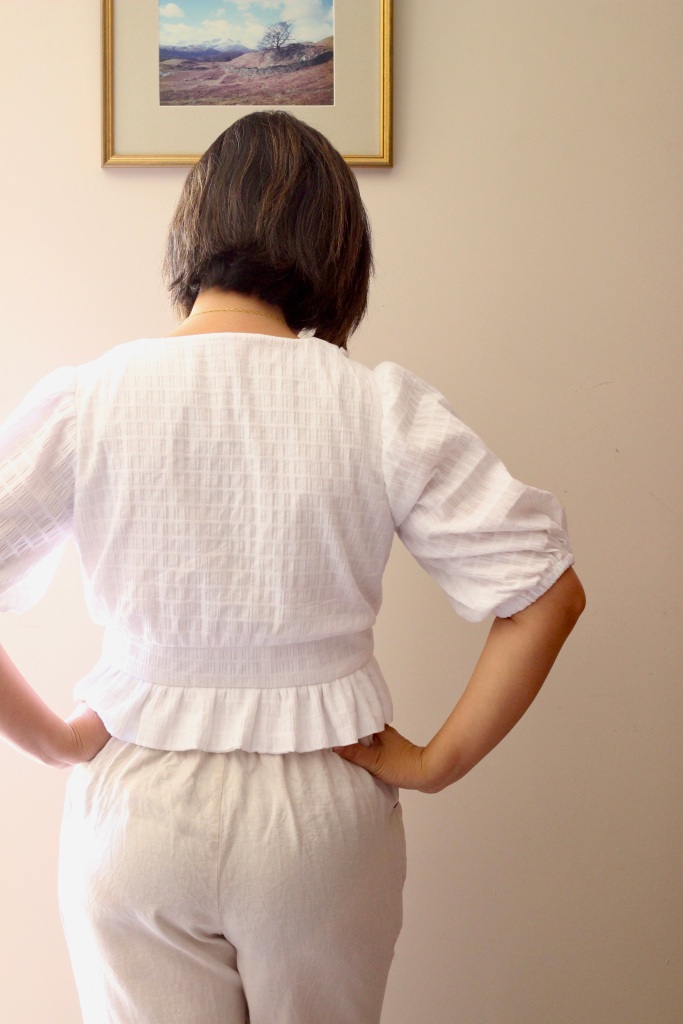
All in all, I really enjoyed this sew. It had so many puzzles for my brain, and I enjoyed all the new elements that were tackled in the sew.
Thanks for reading and happy sewing!
x Em


